Leg Workouts
Last updated on December 01, 2024 by Fitness Goal 4U
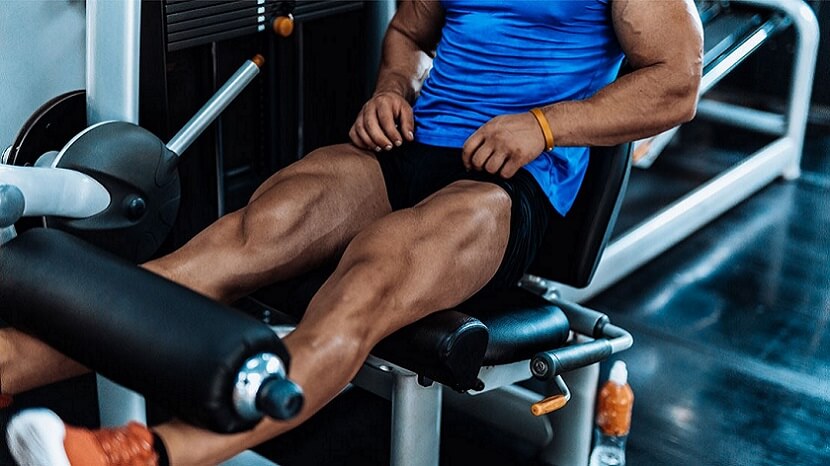
“The real workout starts when you want to stop.” – Ronnie Coleman
Leg workouts are crucial for overall fitness, strength, and mobility. They target the major muscle groups in the lower body, including the quadriceps, hamstrings, glutes, and calves. Incorporating leg exercises into your fitness routine not only helps in building muscle mass and strength but also enhances balance, coordination, and athletic performance. Strong legs support daily activities such as walking, running, and climbing stairs, and contribute to better posture and reduced risk of injuries.
A well-rounded leg workout routine should include a mix of compound movements and isolation exercises. Compound exercises like squats, deadlifts, and lunges engage multiple muscle groups and joints, promoting functional strength and stability. Isolation exercises like leg extensions, hamstring curls, and calf raises specifically target individual muscles, allowing for focused muscle growth and definition. Plyometric exercises like box jumps add an element of explosive power and agility training.
Integrating these diverse exercises ensures comprehensive lower body development, leading to improved overall fitness and performance.
Top 10 Leg Workouts
1. Squats
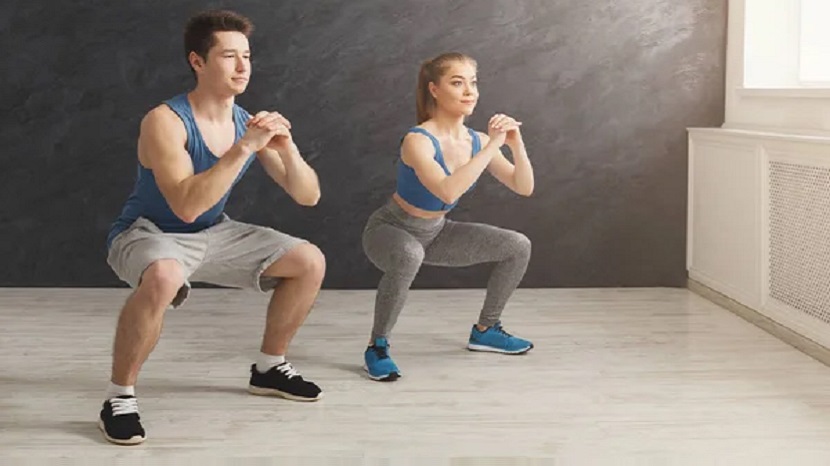
Squats are a fundamental lower body exercise that primarily targets the quadriceps, hamstrings, glutes, and core. They are essential for building strength, muscle mass, and improving overall lower body function. Squats can be performed with or without weights and have many variations to suit different fitness levels and goals.
How to Do
- Stand with feet shoulder-width apart.
- Lower hips back and down.
- Keep chest up and back straight.
- Push through heels to stand up.
Tips
- Keep heels on the ground.
- Engage your core.
2. Lunges
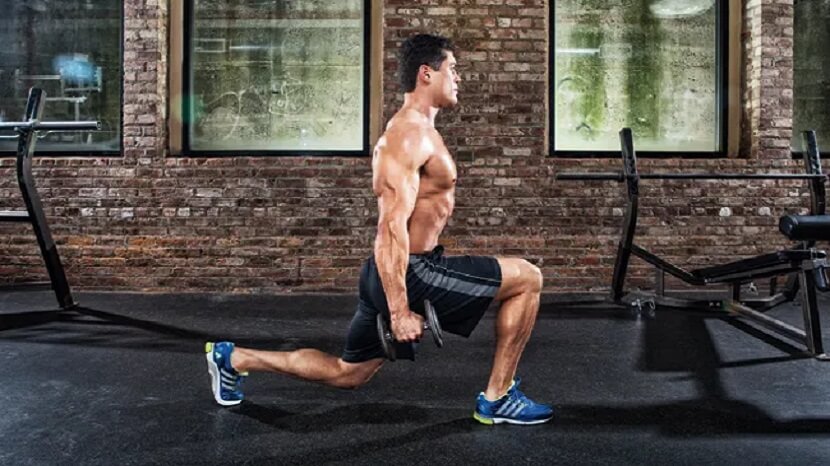
Lunges are a versatile lower body exercise that targets the quadriceps, glutes, hamstrings, and calves. They help improve balance, coordination, and overall leg strength. Lunges can be performed in various directions (forward, reverse, side) and can be modified with weights for added resistance.
How to Do
- Stand with feet together.
- Step forward with one leg.
- Lower hips until both knees are at 90 degrees.
- Push back to starting position.
Tips
- Keep your torso upright.
- Ensure front knee is above ankle.
3. Deadlifts
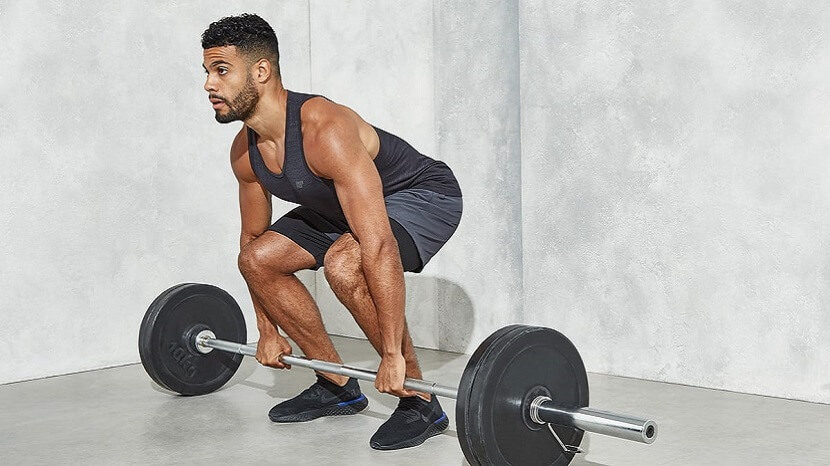
Deadlifts are a compound exercise that targets the posterior chain, including the hamstrings, glutes, lower back, and core. They are highly effective for building strength, improving posture, and enhancing overall athletic performance. Deadlifts can be performed with various equipment, such as barbells, dumbbells, or kettlebells, and have several variations to target different muscles.
How to Do
- Stand with feet hip-width apart.
- Bend at hips and knees to grasp barbell.
- Lift by extending hips and knees.
- Lower bar back down.
Tips
- Keep back straight.
- Engage your core.
4. Leg Press
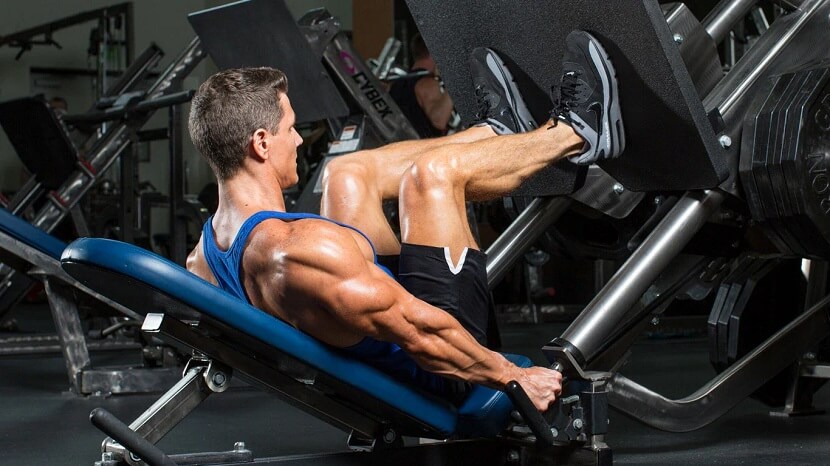
The leg press is a machine-based exercise that primarily targets the quadriceps, glutes, and hamstrings. It is a great alternative to squats for those who may have lower back issues or want to isolate their leg muscles more effectively. The leg press allows for controlled movement and the ability to lift heavier weights with a lower risk of injury.
How to Do
- Sit on leg press machine.
- Place feet shoulder-width apart on platform.
- Push platform away by extending legs.
- Lower back to starting position.
Tips
- Keep feet flat.
- Avoid locking knees.
5. Step-Ups
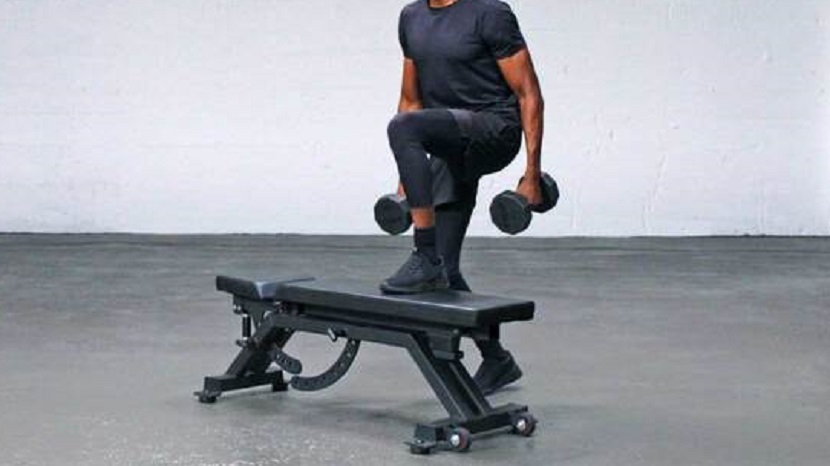
Step-ups are a functional lower body exercise that primarily targets the quadriceps, glutes, and hamstrings. They mimic everyday activities such as climbing stairs and are excellent for building strength, improving balance, and enhancing coordination. Step-ups can be performed with bodyweight or added resistance such as dumbbells or barbells.
How to Do
- Stand facing a bench.
- Step onto bench with one foot.
- Push through heel to lift body.
- Step back down and repeat.
Tips
- Keep torso upright.
- Engage your core.
6. Calf Raises
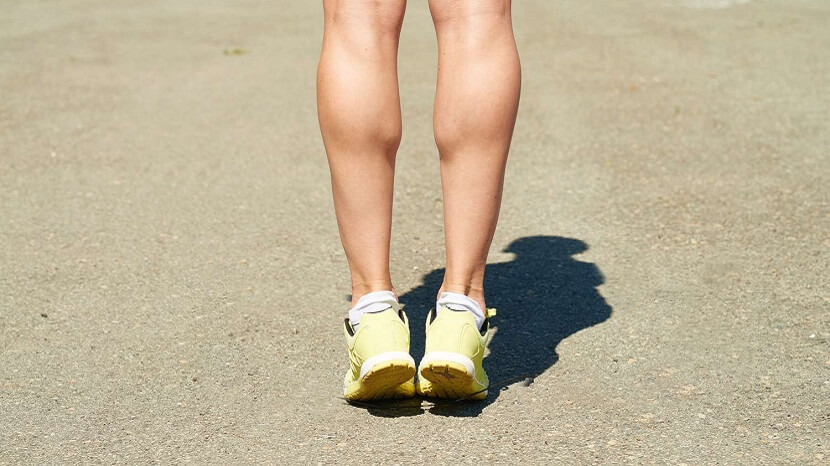
Calf raises are an effective exercise for targeting the muscles in the lower legs, specifically the gastrocnemius and soleus muscles of the calves. They help build strength, endurance, and definition in the calves, which is important for activities such as running, jumping, and overall lower body stability. Calf raises can be performed using bodyweight, dumbbells, barbells, or on a calf raise machine.
How to Do
- Stand with balls of feet on a step.
- Raise heels as high as possible.
- Lower heels back down.
Tips
- Use full range of motion.
- Control the movement.
7. Glute Bridges
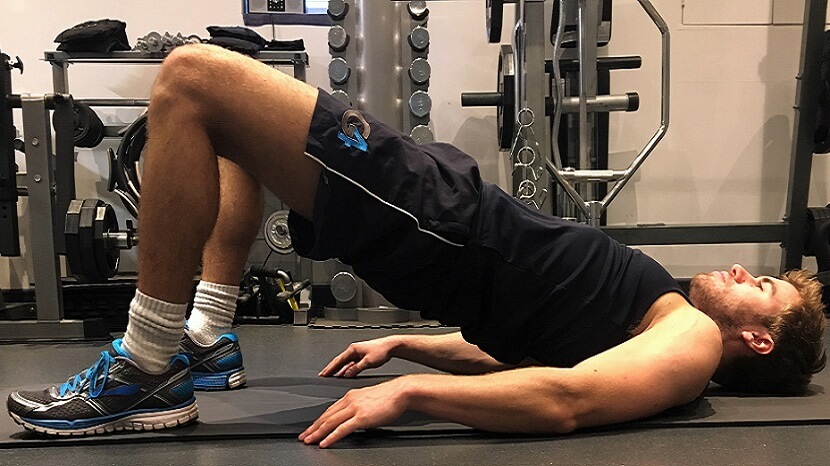
Glute bridges are a highly effective exercise targeting the glutes, hamstrings, and core. They help build strength and endurance in the lower body, improve hip mobility, and enhance overall stability. Glute bridges can be performed using bodyweight or with added resistance such as dumbbells, barbells, or resistance bands.
How to Do
- Lie on your back with knees bent.
- Lift hips until body forms a straight line.
- Lower back down.
Tips
- Squeeze glutes at the top.
- Keep core engaged.
8. Hamstring Curls
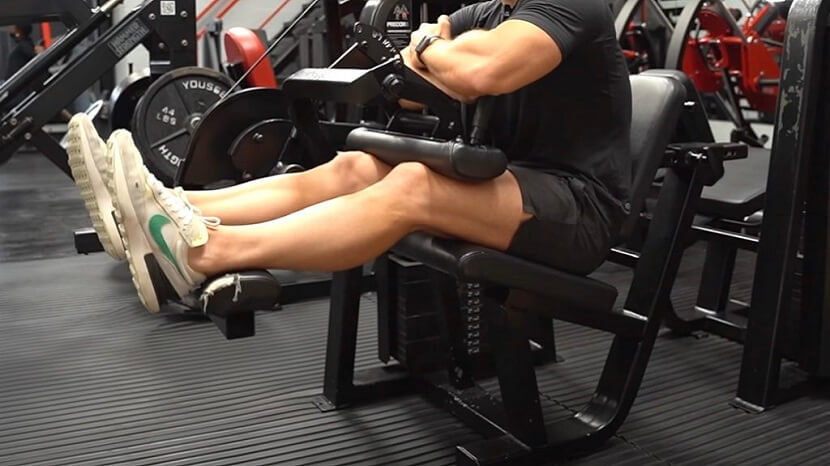
Hamstring curls are an isolation exercise that primarily targets the hamstring muscles at the back of the thighs. They help build strength, increase muscle mass, and improve overall leg function and stability. Hamstring curls can be performed using various equipment, such as machines, resistance bands, or stability balls.
How to Do
- Lie face down on hamstring curl machine.
- Curl legs up towards buttocks.
- Lower legs back down.
Tips
- Use controlled motion.
- Avoid using momentum.
9. Leg Extensions
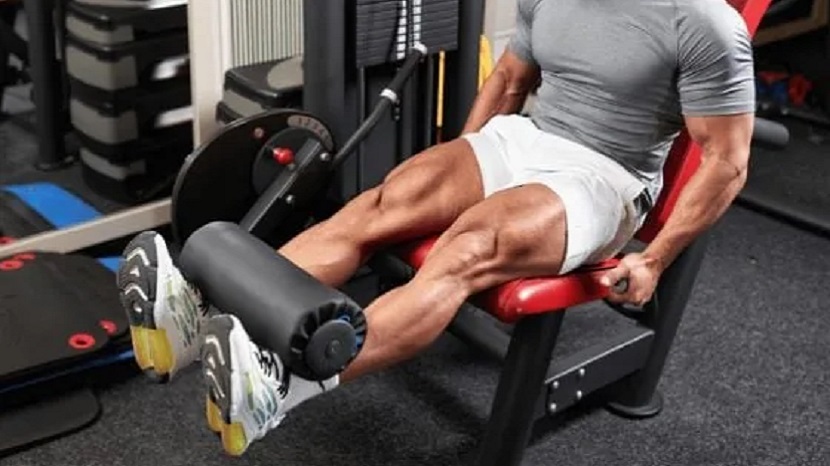
Leg extensions are an isolation exercise that primarily targets the quadriceps muscles at the front of the thighs. They are performed using a leg extension machine and are excellent for building strength and muscle mass in the quadriceps. This exercise is particularly useful for defining the muscles of the front thighs and improving knee stability.
How to Do
- Sit on leg extension machine.
- Extend legs fully.
- Lower back to starting position.
Tips
- Avoid locking knees.
- Control the movement.
10. Box Jumps
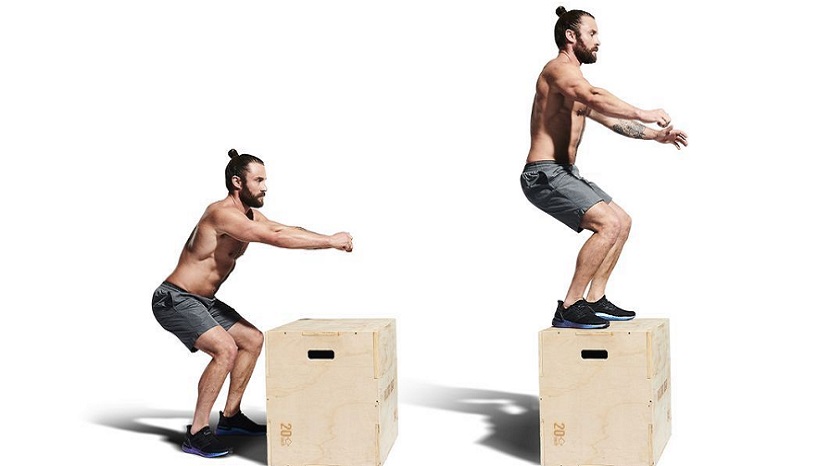
Box jumps are a plyometric exercise that involves jumping from the ground onto a sturdy elevated surface, such as a box or platform. This exercise primarily targets the quadriceps, glutes, hamstrings, and calves, while also engaging the core. Box jumps are excellent for developing explosive power, improving agility, and enhancing overall athletic performance.
How to Do
- Stand facing a box.
- Jump onto the box, landing softly.
- Step or jump back down.
Tips
- Use arms for momentum.
- Land with knees slightly bent.
FAQs (Frequently Asked Questions)
1. Why are leg workouts important?
Answer : Leg workouts are essential for building lower body strength, muscle mass, and endurance. They improve overall athletic performance, enhance balance and coordination, and support daily functional movements like walking and climbing stairs.
2. How often should I do leg workouts?
Answer : It is recommended to do leg workouts 2-3 times per week, allowing at least 48 hours of rest between sessions to promote muscle recovery and growth.
3. Can I do leg workouts at home?
Answer : Yes, many leg exercises can be performed at home with minimal equipment. Bodyweight exercises like squats, lunges, and glute bridges are effective, and adding resistance bands or dumbbells can increase the intensity.
4. What are the best exercises for building leg strength?
Answer : Key exercises for building leg strength include squats, deadlifts, lunges, leg press, and step-ups. These compound movements engage multiple muscle groups for comprehensive strength development.
5. How can I prevent injuries during leg workouts?
Answer : To prevent injuries, ensure proper form and technique, warm up before exercising, start with lighter weights to master the movements, and gradually increase intensity. Also, incorporate stretching and mobility exercises to maintain flexibility.
6. Should I use weights for leg workouts?
Answer : Using weights can enhance muscle growth and strength. Start with bodyweight exercises to master the form, then gradually add weights such as dumbbells, barbells, or resistance bands to increase the challenge.
7. Can leg workouts help with weight loss?
Answer : Yes, leg workouts can help with weight loss by burning calories and building muscle mass, which increases metabolic rate. Compound exercises like squats and deadlifts are particularly effective for calorie burn.
8. How can I target different parts of my legs?
Answer : Varying your exercises can target different parts of your legs. Squats and leg presses primarily target the quadriceps, while deadlifts and hamstring curls focus on the hamstrings. Glute bridges and step-ups emphasize the glutes, and calf raises target the calf muscles.
9. Is it normal to feel sore after leg workouts?
Answer : Yes, it's common to feel sore after leg workouts, especially if you're new to exercise or have increased the intensity. This is known as delayed onset muscle soreness (DOMS) and typically subsides within a few days.
10. Can I do leg workouts if I have knee pain?
Answer : If you have knee pain, it's important to choose low-impact exercises and consult with a healthcare professional. Exercises like glute bridges, leg presses, and hamstring curls can often be performed with minimal knee stress.
Conclusion
Leg workouts are fundamental for achieving balanced fitness, strength, and mobility. Incorporating a variety of exercises such as squats, lunges, deadlifts, and calf raises ensures comprehensive development of the lower body muscles. Regular leg training enhances athletic performance, supports daily activities, and reduces the risk of injuries. Whether performed at home or in the gym, leg workouts can be tailored to all fitness levels with bodyweight or added resistance. Prioritizing proper form, gradual progression, and adequate recovery will lead to significant improvements in lower body strength, muscle mass, and overall physical health.
You might also like our weight loss articles.
If you would like more information about the Top 10 Leg Workouts to Boost Your Strength 2024, please send us an email.
Written by Fitness Goal 4U
Smart Fitness Goals - Achieve Health with Simple Steps
Smart fitness goals focus on being Specific, Measurable, Achievable, Relevant, and Time-bound. They help you create a clear path to success, stay motivated, and track progress. Whether its weight loss, strength building, or improved endurance, smart goals guide your fitness journey, ensuring steady growth and sustainable results tailored to your needs.
“Its hard to beat a person who never gives up.” – Babe Ruth
